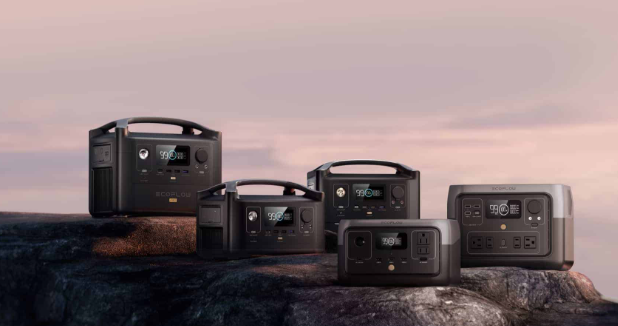Why Every RV Owner Needs a DC to DC Charger in 2025: Power Efficiency on the Move
- What Is a DC to DC Charger and Why Does It Matter?
- Why Your Alternator Isn’t Enough Anymore
- The Real Benefit: Charging While You Drive, Without Guesswork
- Scenarios Where It Changes Everything
- How to Match the Right DC to DC Charger to Your Setup
- How EcoFlow’s DC to DC Charging Setup Works on the Road
- Tips and Mistakes to Avoid During Installation
- FAQs: Smarter Use of DC to DC Chargers in RV Systems
- Conclusion: Smart Power Makes Travel Smoother
Most RV owners assume that driving charges their house battery. But in today’s setups—especially with lithium batteries—that's often not true. The alternator isn’t doing what you think it is. That’s where a DC to DC charger steps in. It's not an upgrade. It's a missing link.
What Is a DC to DC Charger and Why Does It Matter?
A DC to DC charger isn’t a luxury accessory. It’s a power manager. It takes energy from your vehicle’s alternator and delivers it in the correct way to your house battery system.
It does two important things:
- It regulates voltage so your batteries don’t get damaged.
- It makes sure charging continues, even with smart alternators that shut off to save fuel.
Without this device, your alternator might stop providing power to your house battery after a few minutes, even while you're driving. Your fridge, lights, fans, and other appliances rely on that battery. So if you're running with a weak or incomplete charge, you're always one stop away from running empty.
Why Your Alternator Isn’t Enough Anymore
Older RVs had simple wiring and lead-acid batteries. The alternator would push a steady charge back to your house battery. Today’s systems are more complex. Vehicles now use “smart” alternators that reduce output once the starter battery is full. That’s good for efficiency, but it cuts off power to everything else.
Then there's the battery chemistry itself. Lithium batteries won’t charge at all if the voltage dips below a certain threshold. That’s common with long cable runs or unregulated alternator power. So even though you're moving, your battery may be stuck at 45%.
A DC to DC charger solves this by giving your system a stable, optimized charge profile. It fills your battery fast and protects it from low voltage, high heat, or overcharging.
The Real Benefit: Charging While You Drive, Without Guesswork
Let’s say you’re heading to a remote campground. Solar is slow because it’s cloudy. The generator isn’t allowed where you’re staying. But you have a 3-hour drive.
That’s the perfect window for a DC to DC charger to go to work.
While your engine runs, the charger taps into your alternator, cleans up the voltage, and pushes a steady charge into your battery system. It doesn’t care about sun exposure or campsite rules. It just works.
And because it’s designed for mobile use, it adjusts automatically to different driving conditions—hills, idle time, stop-and-go traffic. It keeps delivering charge while the engine runs, even at low speeds.
Scenarios Where It Changes Everything
Some examples from real-world users:
- Boondocking in Arizona: You drive from Flagstaff to Sedona. With a DC to DC charger, you arrive with a full battery instead of scrambling for sunlight.
- Weekend warriors: You use your RV from Friday to Sunday. Every minute on the road becomes a chance to refill your power bank, not just your gas tank.
- Remote work setups: You need laptops, routers, and lights running for hours. The charger gives you consistent uptime without forcing you to hunt for hookups.
- Summer nights with AC running: A full battery at sunset means you can run cooling gear without starting the generator at midnight.
If your lifestyle depends on power—and most RV setups do—this tool gives you one less thing to stress about.
How to Match the Right DC to DC Charger to Your Setup
Before you buy anything, check three key things:
- Vehicle system voltage: Most passenger vans and trucks are 12V. Heavy-duty trucks or buses may be 24V. Your charger needs to match.
- Battery chemistry: Lithium (LiFePO4), AGM, or Gel? Make sure your charger has the right profile or selectable modes.
- Alternator capacity: A high-output charger may draw more current than your alternator can handle. Know your limits. A 30A charger, for example, can demand over 400W at 13.5V.
You also want a model with protections: over-temp shutoff, low-voltage cutout, and ideally ignition-sensing. Some chargers will only activate when the engine is on, so they won’t drain your starter battery when parked.


How EcoFlow’s DC to DC Charging Setup Works on the Road
If you're looking for a clean, compact way to charge on the move, the EcoFlow 800W Alternator Charger combined with the EcoFlow DELTA 2 Max Portable Power Station offers an easy solution. The car charger connects directly to 12V or 24V systems and auto-adjusts for safety and efficiency.
The DELTA 2 Max itself has over 2kWh of storage. That’s enough to run kitchen appliances, workstations, or a CPAP machine overnight. And the car charger can refill it significantly during a normal driving day. You don’t need to stop for hours of solar. You don’t need a hookup.
What sets this apart is the control. You know how much power you’re putting in, how much you have, and how fast it’s charging. That’s something most older systems don’t offer.
Tips and Mistakes to Avoid During Installation
- Keep wire runs short and properly sized. Use thick-gauge cables for anything over 10 feet.
- Fuse both ends of the circuit—one near the alternator and one near the battery.
- Don't mount near hot engine parts or inside sealed boxes.
- If you're unsure, ask for help. A miswired charger can do more harm than good.
- Always test with a voltmeter before finalizing any installation.


FAQs: Smarter Use of DC to DC Chargers in RV Systems
Q1: Can I use a DC to DC charger with an older alternator?
Yes, but you need to check the alternator’s continuous output capacity. Older alternators often run hotter and produce less power at idle, which limits how much current the charger can draw safely. Installing a charger with adjustable input settings—or one rated below 50% of alternator capacity—is usually safer in vintage vehicles. Overloading can lead to belt squeal, voltage drop, or premature wear. If you're unsure, have a technician test your alternator under load before installation.
Q2: Will the DC to DC charger keep working if I stop and start my vehicle frequently?
It depends on how long the engine runs during each drive. Most chargers activate when they sense the engine voltage rise above a threshold, but short trips under 10 minutes may not deliver much usable energy. If your driving includes frequent stops, consider pairing the charger with an energy monitor so you can track net gain. For urban RVers or delivery-based van builds, engine idling may help top off, but it's less effective than highway travel.
Q3: Can I charge two battery banks with a single DC to DC charger?
Only if the charger supports dual output, which most standard models don’t, for two battery banks—such as one inside the van and one in a trailer—you’ll need either two chargers or a charge manager that can switch between banks. Trying to split a single output can lead to uneven charging and undervoltage in one system. Always isolate battery banks unless the system is designed for parallel charging.
Q4: How do I know the charger is actually working while driving?
The best way is to monitor voltage and current going into your house battery while the engine is running. A multimeter or battery monitor like a shunt-based system can show charge activity in real time. Some chargers include LED indicators or optional display panels. If there’s no change in voltage after 5–10 minutes of driving, check fuse placement, wiring continuity, and the ignition trigger input if your model uses one.
Q5: Is it safe to use a DC to DC charger in freezing temperatures?
Most chargers operate safely down to 14°F (–10°C), but lithium batteries often restrict charging below 32°F (0°C). If your setup includes lithium, make sure the charger either blocks low-temp charging automatically or works alongside a battery with built-in thermal protection. Charging a cold lithium battery can cause internal damage over time. For cold-climate RVers, preheating systems or temperature-aware chargers are strongly recommended.
Conclusion: Smart Power Makes Travel Smoother
RV life runs on energy. Your fridge, your fan, your phone—they all need power you can count on. With a DC to DC charger in place, every mile becomes a power gain. It’s simple, quiet, and efficient.
Instead of hoping your alternator does the job, you take control. You protect your batteries, you extend your runtime, and you stay ready wherever the road leads.
If you’ve invested in a power station or lithium setup, this might be the missing piece that finally brings it all together.